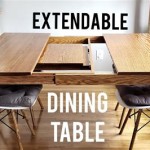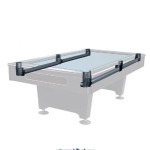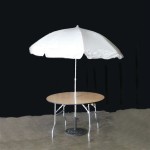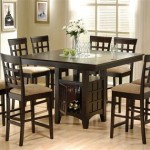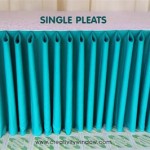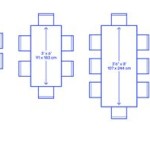Center Table Living Room Decor: Elevating Your Space
The center table, often referred to as a coffee table, is a focal point within the living room. It serves not only a functional purpose, providing a surface for drinks, books, and decorative items, but also a crucial role in defining the aesthetic of the space. Thoughtful center table decor can significantly enhance the overall ambiance of the living room, contributing to a more inviting and stylish environment. Selecting the right decor elements and arranging them effectively requires careful consideration of several factors, including the table's size and shape, the existing decor of the room, and the desired style.
The process of decorating a center table goes beyond simply placing a few items on its surface. It involves curating a collection of objects that complement each other and the surrounding decor, creating a visually appealing and functional arrangement. Attention should be paid to elements such as height, texture, color, and balance to achieve a harmonious and aesthetically pleasing result. A well-decorated center table can act as a conversation starter and add personality to the living room, reflecting the homeowner's taste and style.
Selecting the Right Center Table
Before embarking on the decor process, the first step is to ensure that the center table itself is appropriate for the space. Considerations include the table's size, shape, and material. A table that is too large will overwhelm the room, while one that is too small will appear insignificant. The shape of the table should complement the layout of the room and the furniture arrangements. For example, a rectangular table typically works well with a long sofa, while a round table can soften the lines of a square room.
The material of the center table should also be carefully considered. Options range from wood and glass to metal and stone, each offering a different aesthetic and level of durability. A wooden table can bring warmth and natural texture to the room, while a glass table can create a sense of lightness and airiness. Metal tables often offer a more contemporary and industrial look. The choice of material should align with the overall style of the living room and the desired level of maintenance.
Beyond the aesthetic considerations, functionality is also paramount. Consider whether the center table will serve primarily as a decorative element or if it needs to provide storage space. Some center tables feature drawers or shelves, which can be useful for storing remote controls, magazines, and other items. If storage is a priority, opt for a table with built-in storage solutions. Finally, consider the safety aspects, especially in households with young children. Tables with rounded edges and durable materials are preferable to those with sharp corners or fragile surfaces.
Key Elements of Center Table Decor
Once the appropriate center table is chosen, the next step is to select the decorative elements. Successful center table decor often incorporates a combination of different elements, including trays, books, candles, plants, and decorative objects. The key is to curate a selection of items that complement each other in terms of color, texture, and style, creating a visually appealing arrangement.
A tray is a versatile element that can serve as an anchor for the decor arrangement. It helps to group items together and creates a sense of order and cohesion. Trays can be made from various materials, such as wood, metal, or acrylic, and can be chosen to match the style of the room. The tray can be used to hold items such as candles, small plants, or decorative objects.
Books are another popular element for center table decor. They can add height and visual interest to the arrangement, and they also offer an opportunity to showcase personal interests and style. Choose books that are visually appealing, with interesting covers or spines. Stacking books of varying sizes and colors can create a dynamic and visually appealing display. Consider using bookends to keep the books organized and add another decorative element.
Candles are a simple yet effective way to add ambiance and warmth to the living room. Choose candles in different sizes and shapes, and consider using scented candles to create a pleasant aroma. Candles can be placed on a tray or arranged individually on the table. Consider using decorative candle holders to enhance the visual appeal of the arrangement.
Plants can bring life and freshness to the center table decor. Choose plants that are appropriate for the lighting conditions in the room and that require minimal maintenance. Succulents, air plants, and small potted plants are all good options. Arrange the plants in decorative pots or containers to complement the style of the room.
Decorative objects can add personality and visual interest to the center table decor. Choose objects that reflect personal interests and style, such as sculptures, vases, or decorative boxes. Consider using objects of varying sizes and shapes to create a dynamic and visually appealing arrangement. Avoid cluttering the table with too many objects, as this can make the arrangement look messy and overwhelming.
Arranging Center Table Decor: Principles of Design
The arrangement of the decorative elements is just as important as the selection of the items themselves. Adhering to basic principles of design, such as balance, proportion, and contrast, can help to create a visually appealing and harmonious arrangement.
Balance refers to the visual weight of the objects on the table. A balanced arrangement should feel stable and visually pleasing. There are two types of balance: symmetrical and asymmetrical. Symmetrical balance involves arranging identical objects on either side of an imaginary center line, creating a formal and structured look. Asymmetrical balance involves arranging objects of different sizes and shapes on either side of the center line, creating a more informal and dynamic look. Choose the type of balance that best suits the style of the room and personal preferences.
Proportion refers to the relative size of the objects on the table. A well-proportioned arrangement should have a sense of harmony and balance. Avoid using objects that are too large or too small for the table, as this can disrupt the overall balance of the arrangement. Consider the height of the objects as well, and aim for a variety of heights to create visual interest.
Contrast refers to the difference in color, texture, and shape of the objects on the table. Contrast can add visual interest and excitement to the arrangement. Consider using objects of different colors and textures to create a dynamic and visually appealing display. For example, a smooth glass vase can be paired with a rough wooden tray, or a brightly colored candle can be placed next to a neutral-colored book.
In addition to these principles, it is also important to consider the functionality of the center table. Ensure that the arrangement is not so cluttered that it interferes with the table's primary function. Leave enough space for drinks, books, and other items that will be placed on the table. Consider the traffic flow around the table and ensure that the arrangement does not obstruct the walkway.
Finally, do not be afraid to experiment with different arrangements until the desired look is achieved. Center table decor is a personal expression, and the best arrangement is one that reflects individual style and preferences. Continuously adjust and refine the arrangement until it feels balanced, harmonious, and visually appealing. Consider taking photographs of different arrangements to compare and contrast them, helping to identify the most successful layout.
Regularly refresh the center table decor by swapping out items or rearranging the existing elements. This can help to keep the living room looking fresh and inviting. Consider changing the decor seasonally to reflect the changing seasons and holidays. Adding new elements, such as seasonal flowers or decorative objects, can add a festive touch to the living room.
Center table decor is an ongoing process, not a one-time event. By paying attention to the principles of design and continually refining the arrangement, the center table can become a focal point of the living room, adding personality, style, and functionality to the space. Remember to choose elements that reflect personal taste and style, and to create an arrangement that is both visually appealing and practical.

Coffee Table Decor Styling And Arrangement Ideas For 2025 Jane At Home

5 Decoration Tips On How To Style Modern Center Tables

Coffee Table Decor Styling And Arrangement Ideas For 2025 Jane At Home

Center Table Decoration Ideas To Elevate Your Living Room Décor

Anbazar Rectangular Coffee Table Tea Metal Frame 2 Tier Tempered Glass Shelves For Living Room Waiting White Wjz 019 The Home Depot

5 Tips To Decor Your Contemporary Center Table

Glam Mirrored Coffee Table Crystal Diamond Accent Leisure Cocktail Center For Living Room Decor

Great Ideas On How To Decorate And Design Your Coffee Table Designs

Living Room Set With More Than 30 Golden Center Table Ideas

7 Showstopper Living Room Center Table Decor Ideas Fabuliv Blogs 2024

